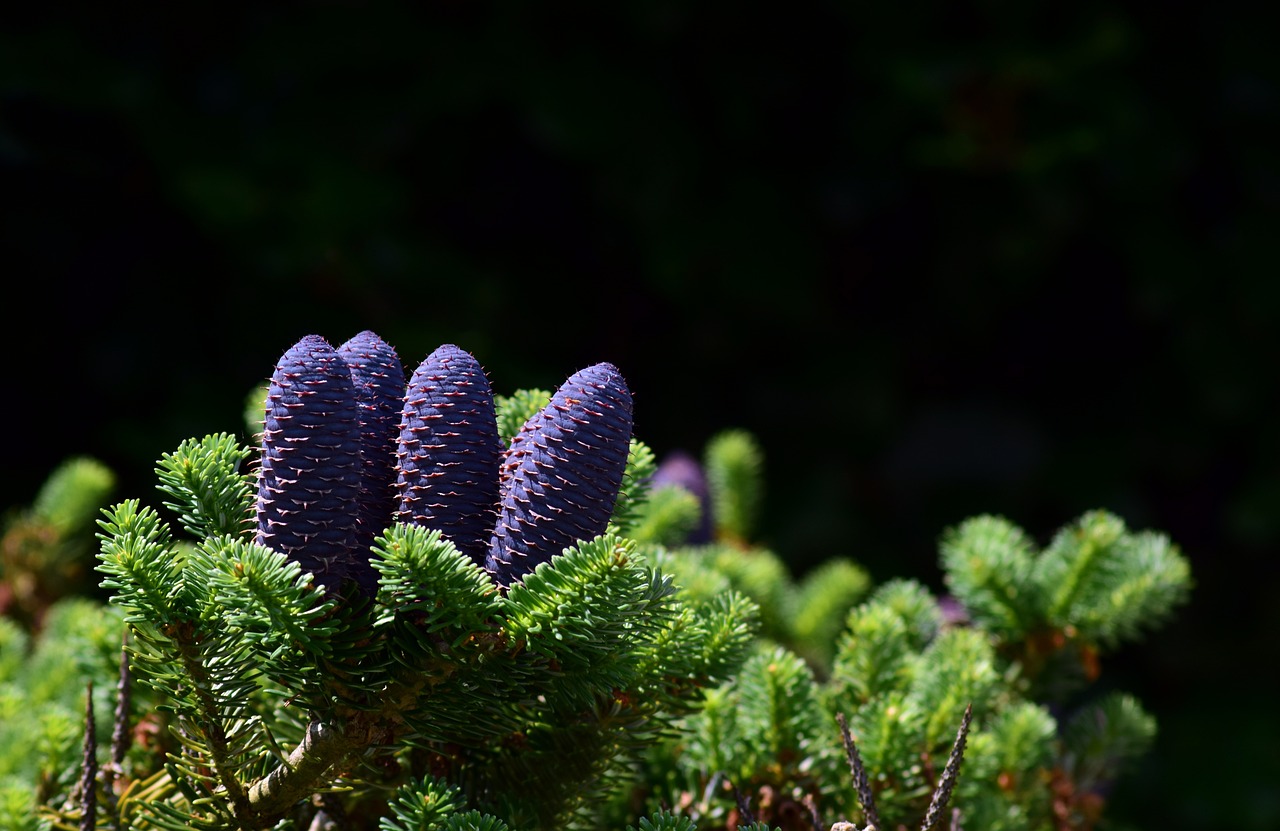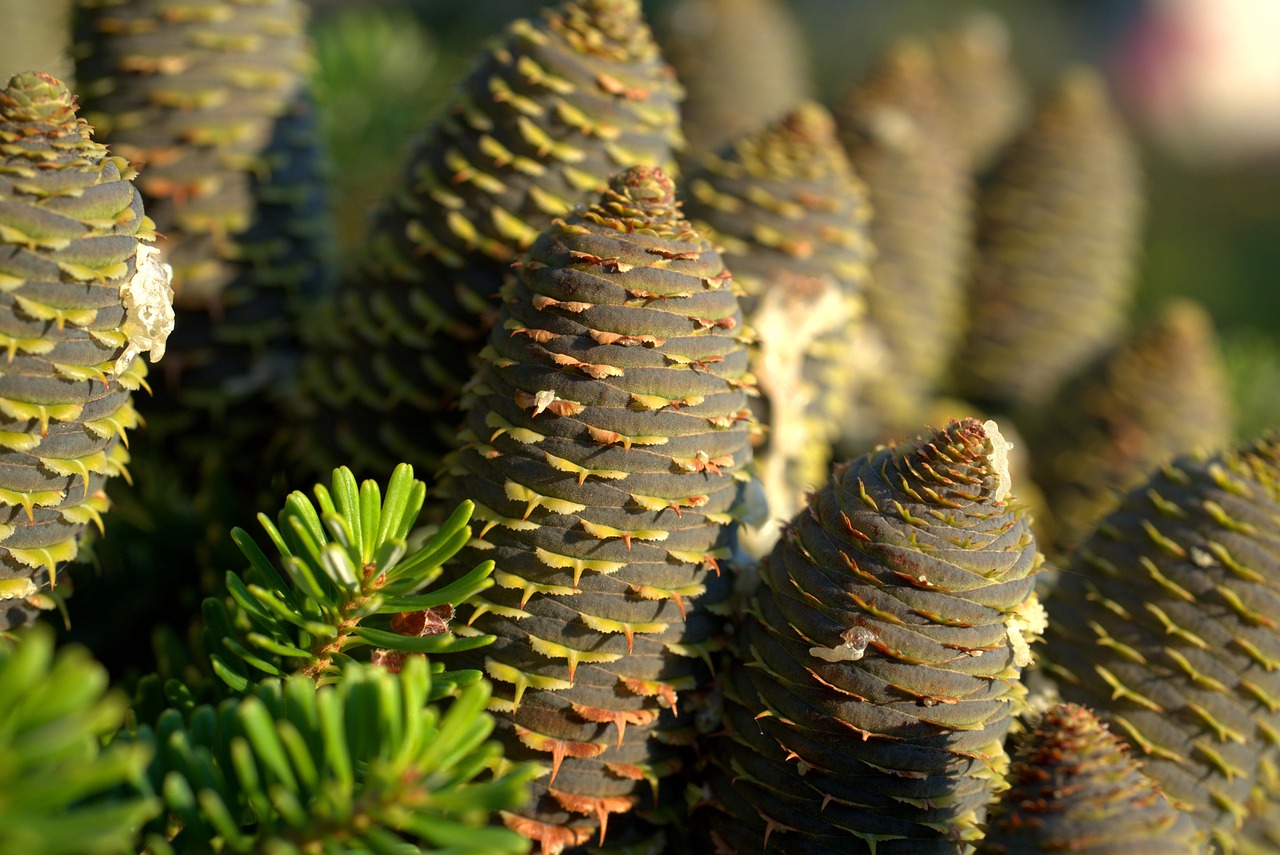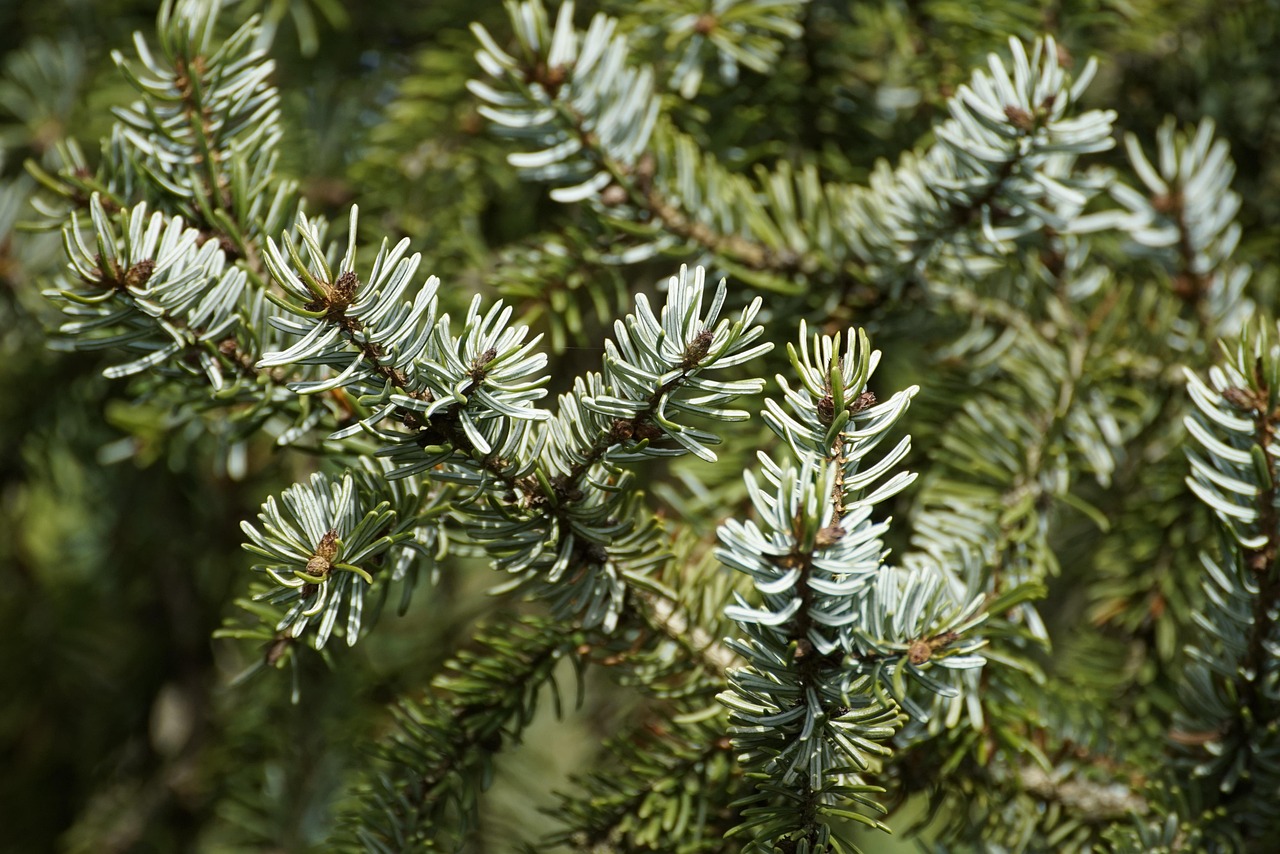Fir trees typically grow at varying rates depending on their environment. In forest landscapes, fir trees can grow between 12 to 24 inches per year, while in urban settings, their growth may slow down to 6 to 12 inches annually due to factors such as soil quality and competition for resources.
Understanding Fir Tree Growth Rates
Fir trees, belonging to the Abies genus, are known for their majestic height and evergreen foliage. These trees thrive in a variety of environments, but their growth rates differ significantly between forested areas and urban landscapes. Understanding these differences is vital for forestry management and urban planning.

In natural forest settings, fir trees benefit from optimal conditions including rich soil, ample moisture, and minimal competition. These factors contribute to robust growth rates. Conversely, in urban areas, fir trees often face challenges. Limited space, poor soil quality, and environmental stressors can impede their growth.
Factors Influencing Growth Rates
Several factors influence the growth rates of fir trees. These include:
- Soil Quality: Fertile soils rich in nutrients promote faster growth.
- Water Availability: Adequate moisture is crucial for healthy tree development.
- Competition: Trees in densely populated areas may struggle for sunlight and resources.
- Climate Conditions: Temperature and precipitation patterns impact overall growth.
- Urban Stressors: Pollution and physical barriers can hinder growth in cities.
Comparative Growth Rates
The growth rates of fir trees can be categorized based on their environments. The following table illustrates some key differences between growth rates in forest and urban landscapes.

| Environment | Average Growth Rate (inches/year) | Optimal Conditions |
|---|---|---|
| Forest | 12 – 24 | Rich soil, high moisture, minimal competition |
| Urban | 6 – 12 | Poor soil, limited space, environmental stress |
The data presented indicates a clear disparity in growth potential. Fir trees in natural forests can thrive and reach impressive heights quickly. In contrast, urban firs often grow at half the rate due to various limitations.
The Role of Forest Management
Effective forest management practices can enhance the growth rates of fir trees. Strategies include:
- Thinning: Reducing competition by selectively removing weaker trees.
- Soil Management: Improving soil quality through amendments and mulching.
- Irrigation: Providing supplemental water during dry periods.
- Pest Control: Monitoring and managing pests that could harm tree health.
Implementing these strategies can help maximize growth rates in forest settings. Furthermore, monitoring tree health is essential for maintaining sustainable growth over time.

Urban Tree Care Practices
Caring for fir trees in urban environments requires specific practices to counteract the challenges they face. These practices include:
- Regular Pruning: Encouraging healthy structure and improving airflow.
- Nutrient Supplements: Using fertilizers to enrich poor soils.
- Shelter from Pollution: Planting trees away from heavy traffic areas.
- Mulching: Retaining moisture and suppressing weeds around the base.
By adopting these practices, urban dwellers can enhance the chances of fir trees reaching their full growth potential despite environmental constraints.
The differences in growth rates between forest and urban landscapes highlight the need for tailored approaches to tree care and management. Understanding these dynamics is crucial for promoting healthy fir tree populations across various settings.

Growth Patterns of Fir Trees
Understanding the growth patterns of fir trees is essential for both forestry management and urban landscaping. These patterns can vary widely based on the species of fir, local soil conditions, and climatic factors. By examining these growth patterns, we can gain insights into the health and longevity of these trees.
Species Variations
There are several species of fir trees, each with unique growth characteristics. Some of the most common species include:
- Douglas Fir (Pseudotsuga menziesii): Known for its rapid growth, this species can reach heights of up to 300 feet in optimal conditions.
- White Fir (Abies concolor): This species typically grows slower than Douglas fir but is known for its adaptability to various soils.
- Noble Fir (Abies procera): A popular choice for Christmas trees, it grows at a moderate pace and can live for hundreds of years.
- Fraser Fir (Abies fraseri): This species is smaller and often found in higher elevations, growing well in cooler climates.
Each species has its own growth rate, influenced by environmental factors. Douglas firs, for example, thrive in moist, well-drained soils and can reach substantial heights quickly. In contrast, Fraser firs prefer cooler climates and may experience slower growth due to their specific habitat requirements.
Influence of Soil Composition
The composition of soil plays a significant role in the growth rate of fir trees. Healthy soil should contain:
- Nutrients: Essential elements like nitrogen, phosphorus, and potassium are crucial for tree health.
- Organic Matter: Decomposed plant material enriches the soil and improves moisture retention.
- pH Level: Fir trees generally prefer slightly acidic soils with a pH between 5.5 and 6.5.
- Drainage: Well-drained soils prevent root rot and encourage healthy root development.
Soil testing can help determine the nutrient levels and pH balance, allowing for effective amendments to promote fir tree growth.
Climate Impacts on Growth Rates
The climate significantly affects the growth rates of fir trees. Key factors include:
- Temperature: Fir trees generally prefer cooler temperatures. Extreme heat can stress trees and inhibit growth.
- Precipitation: Adequate rainfall is vital for hydration. Areas experiencing drought may see stunted growth.
- Sunlight: Fir trees need sufficient sunlight for photosynthesis; however, some species can tolerate partial shade.
Changes in climate patterns can lead to altered growth rates. For instance, prolonged droughts may weaken trees, making them more susceptible to diseases and pests.
Pests and Diseases Affecting Fir Trees
Pests and diseases can have a detrimental impact on the growth rates of fir trees. Awareness of these threats is key to maintaining healthy populations. Common pests include:
- Bark Beetles: These insects bore into the bark, disrupting nutrient flow and causing tree stress.
- Spruce Budworms: Feeding on new foliage, these caterpillars can defoliate trees, leading to reduced growth.
- Aphids: These small insects suck sap from the tree, weakening it over time.
Diseases such as root rot and needle cast can also hinder tree health. Early detection and management strategies are essential to mitigate these issues.
Management Strategies for Healthier Growth
To promote healthy growth rates in fir trees, several management strategies can be implemented:
- Pest Monitoring: Regular checks for signs of pest infestations can help catch problems early.
- Fungicide Applications: Using fungicides can help prevent fungal diseases affecting fir trees.
- Plant Diversity: Incorporating a variety of tree species can enhance ecosystem resilience against pests and diseases.
- Education and Outreach: Informing community members about proper tree care practices encourages collective efforts in maintaining healthy landscapes.
By adopting these strategies, both forest managers and urban planners can ensure fir trees flourish regardless of their environment. Proper care will not only support the growth of fir trees but also contribute positively to the surrounding ecosystem.
The interplay between species characteristics, soil quality, climate conditions, and pest management significantly influences the growth rates of fir trees. Understanding these factors helps optimize their health and longevity in various settings.
Fir Tree Growth in Urban Environments
Urban environments pose unique challenges and opportunities for the growth of fir trees. As cities expand, understanding how fir trees adapt to urban settings is crucial for effective landscape planning and maintenance. This section explores the impacts of urbanization on fir tree growth and offers insights into successful urban forestry practices.
Challenges Faced by Fir Trees in Urban Areas
Fir trees in urban settings encounter several challenges that can affect their growth rates. Some of the most significant challenges include:
- Soil Compaction: Urban areas often have compacted soils due to construction and foot traffic. This reduces root growth and water absorption.
- Limited Root Space: Sidewalks, buildings, and other infrastructure can restrict the space available for root expansion.
- Pollution: Air and soil pollution can negatively impact tree health, leading to slower growth rates.
- Inadequate Water Supply: Fir trees may struggle to obtain sufficient water due to competition with other plants or insufficient irrigation.
- Microclimates: Urban heat islands can create warmer conditions that may not be suitable for certain fir species.
These challenges can lead to stunted growth, increased susceptibility to diseases, and a shorter lifespan for fir trees in urban settings. Addressing these issues is essential for promoting healthier urban forests.
Strategies for Successful Urban Fir Tree Growth
To ensure fir trees thrive in urban environments, several strategies can be implemented:
- Soil Improvement: Aerating the soil and adding organic matter can help alleviate compaction and improve drainage.
- Tree Pits: Designing adequate tree pits that allow for root expansion can enhance growth potential.
- Irrigation Systems: Installing efficient irrigation systems can provide consistent moisture during dry periods.
- Mulching: Applying mulch around the base of trees helps retain soil moisture and regulate temperature.
Implementing these strategies encourages fir trees to establish strong root systems and promotes overall health in urban landscapes.
The Role of Community in Urban Forestry
The involvement of the community is crucial for the success of urban forestry initiatives. Engaging local residents can lead to better care and appreciation of fir trees. Some key aspects include:
- Awareness Programs: Educating the community about the importance of trees and proper care techniques fosters a sense of responsibility.
- Volunteer Planting Events: Organizing events where residents can participate in planting and caring for fir trees encourages community bonding.
- Monitoring Health: Involving citizens in monitoring tree health can help identify issues early on and promote proactive management.
Community engagement not only enhances tree growth but also strengthens the relationship between residents and their natural environment.
Case Studies of Successful Urban Fir Tree Programs
Several cities have successfully integrated fir trees into their urban landscapes through innovative programs. Here are a few notable examples:
| City | Program Name | Description |
|---|---|---|
| Portland, Oregon | Green Streets Initiative | This program integrates street trees, including fir varieties, into stormwater management systems. |
| New York City, New York | MillionTreesNYC | A citywide initiative aimed at planting one million trees, including various fir species, to improve urban green space. |
| Sacramento, California | Tree Canopy Assessment | This program assesses tree canopy coverage and implements strategies to enhance tree health and diversity, including fir trees. |
These programs demonstrate the potential for urban environments to support healthy fir tree populations while providing aesthetic and environmental benefits.
The Future of Fir Trees in Urban Landscapes
The future of fir trees in urban landscapes will depend on continued research and adaptation to changing conditions. As climate change progresses, it may be necessary to reassess which species thrive best in specific urban environments. Factors such as heat tolerance, drought resistance, and disease resilience will become increasingly important.
Furthermore, incorporating advanced technologies such as remote sensing and data analysis can improve urban forestry strategies. Monitoring growth patterns and health metrics will allow city planners to make informed decisions about tree management.
Overall, fostering a sustainable relationship between fir trees and urban populations requires ongoing commitment from both community members and city officials. By prioritizing healthy tree growth, cities can enhance their ecological footprint while providing valuable green spaces for residents.
Adapting to Environmental Changes
As climate change continues to impact ecosystems globally, fir trees will need to adapt to shifting conditions. This includes facing more extreme weather events, such as droughts, heavy rainfall, and temperature fluctuations. Research suggests that some fir species may be more resilient than others when it comes to coping with these changes. Understanding these differences is vital for selecting tree species for urban and forest environments.
It is also essential to monitor the health of fir trees regularly. Early detection of stress factors such as pests or diseases can mitigate potential damage. Community involvement in this monitoring process can enhance the overall success of urban forestry initiatives, fostering a culture of care for local greenery.
Climate Resilience Strategies
To ensure the resilience of fir trees against climate change, several strategies can be implemented:
- Diversity in Planting: Introducing a mix of fir species can enhance resilience against pests and diseases while accommodating varying climate conditions.
- Native Plant Integration: Incorporating native tree species alongside fir trees can create a more balanced ecosystem that supports local wildlife.
- Water Management: Implementing sustainable water management practices can help ensure that trees receive adequate hydration during dry spells.
- Tree Canopy Management: Regular maintenance of tree canopies can improve air circulation and reduce the risk of diseases.
Implementing these strategies not only promotes healthy fir trees but also contributes to the overall resilience of urban and forest ecosystems.
The Importance of Fir Trees in Ecosystems
Fir trees play a crucial role in both forest and urban ecosystems. They provide habitat for various wildlife species, including birds, insects, and small mammals. Additionally, fir trees contribute to air quality by absorbing carbon dioxide and releasing oxygen, which is essential for maintaining a balanced environment.
In urban landscapes, fir trees can help combat heat islands by providing shade and cooling the surrounding areas. Their presence also enhances aesthetic beauty, making cities more inviting for residents and visitors alike. Urban planners should prioritize the inclusion of fir trees in their designs to maximize these benefits.
Potential Economic Benefits
The economic advantages of maintaining healthy fir tree populations are significant. Fir trees can increase property values in urban settings by enhancing the visual appeal of neighborhoods. Studies show that well-maintained green spaces contribute to higher real estate prices, making areas with abundant trees more desirable.
Furthermore, fir trees can support local economies through timber production and tourism. Sustainable forestry practices ensure that timber from fir trees can be harvested without compromising future growth, providing ongoing economic benefits. Ecotourism centered around healthy forests can also attract visitors interested in nature and outdoor activities.
Conclusion
The growth rates of fir trees in both forest and urban landscapes hinge on a myriad of factors including soil quality, climate conditions, species variations, and sustainable management practices. While fir trees generally grow faster in forests due to optimal conditions, urban environments present unique challenges that require tailored strategies for successful growth.
As cities continue to expand, the role of fir trees becomes increasingly vital. They not only enhance ecological health but also contribute to economic benefits and community well-being. The importance of integrating effective management strategies cannot be overstated, as proactive measures will ensure the longevity and health of fir trees in urban landscapes.
Ultimately, fostering a sustainable relationship between people and fir trees requires a collective effort from community members, urban planners, and environmentalists. By prioritizing the health and growth of these majestic trees, we can create greener, healthier environments that benefit all living beings. As we move forward, continued research and community engagement will be crucial in adapting our approaches to meet the evolving challenges posed by climate change.
